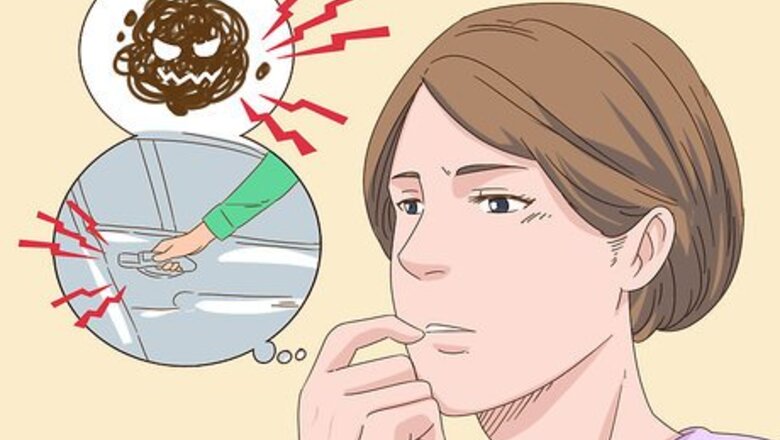
views
Managing Your Fear in the Moment
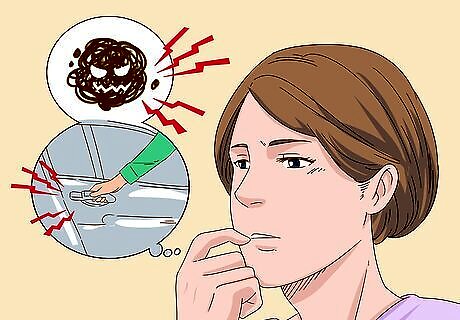
Assess the situation. Fear is a natural response to a perceived threat, and in certain circumstances it can be healthy. However, fear can also inspire a fight or flight response in situations even when there is no threat. Take a moment to assess the situation and see if your fear is coming from an actual threat, or just as a reaction to something unfamiliar. If, for example, you hear a bump in the night, take a moment to think about if there are other things, such as your neighbor closing their car door, that could make that noise. If there is something real, do something about it, like making an appointment to have a doctor look at that mole, or calling the police if a stranger is walking around beside your house. Think about whether your reaction is due to fear or phobia. While phobias trigger fear reactions, the reactions are disproportionate to the actual danger. Phobias interfere with your ability to cope. You may need the help of a therapist or doctor to deal with a phobia.
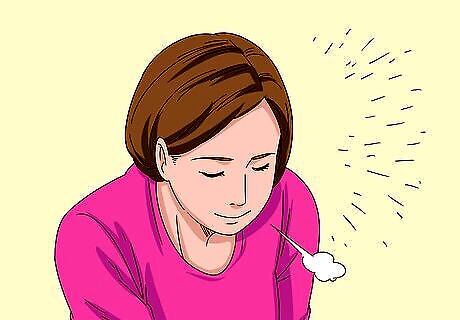
Breathe. When you're scared and not thinking properly, you tend to start hyperventilating, which increases your fears. Take deep full breaths and relax your body. Start with your shoulders and as you breathe, work your way down to your feet, relaxing each muscle. Not only will your breathing calm you and make sure you are getting enough oxygen, focusing on your breathing and relaxing your body will keep you from focusing on what is scaring you. Being scared means that our hypothalamus (which governs flight or fight) activates our sympathetic nervous system and we tense up. It also has the adrenal-cortical system dump a bunch of hormones into our system, so even if we're scared about going to a party and meeting a bunch of new people, our hypothalamus interprets this as a fight or flight situation. So breathe and you'll calm the hypothalamus.

Write down what you are scared of. In the moment, while you're busy being scared, get out a pen and a piece of paper and write down everything you're scared of. This exercise helps you draw your fears out into consciousness. You acknowledge them and it makes it easier to let them go. Many of the seemingly scary things go back to a primal fear like being scared of death (the potentially cancerous mole), being scared that no one will like you (going to the party and meeting new people). Acknowledging your fears won't make them magically vanish, but it will help you to better articulate them.

Tell someone. If you're having a scary moment, call someone up and talk to them. Make sure it is a trusted friend or family member. You can even call a hotline for people with anxiety. Talking to someone can help simply through making a connection, but your friend can also help put your fears to rest.
Not Being Scared in the Long Run
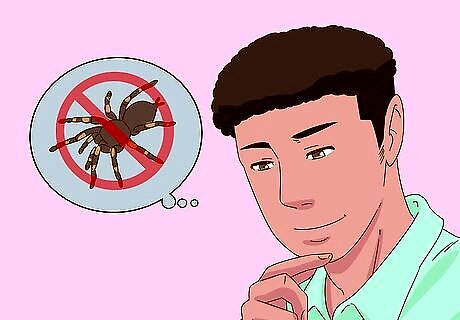
Change your thinking. Being scared is about what pathways are being used and created in the brain. To stop being scared you have to basically rewire your brain. It's not as hard as it sounds thanks to neuroplasticity. Neuroplasticity is involved in processing memories and how we learn. By practicing "desensitization," a person can change the pathways in their brain that react fearfully to the things that scare them. "Desensitization" is basically just being exposed to the thing that scares a person gradually and in controlled environments. Start by asking yourself reflective questions such as, "What am I afraid of? Is my fear realistic? What is the worst thing that can happen to me in this situation? What can I do to protect myself from this outcome?" Chart your emotional reaction to physical stimuli and surroundings that cause you to be scared. For instance, if spiders scare you, the physical stimulus is the appearance of the spider. From there the emotional reaction is fear, being scared and this can get heightened all the way to panic levels, depending on your response. Charting this will help you cultivate a detached reaction instead of an emotional reaction to the appearance of a spider.
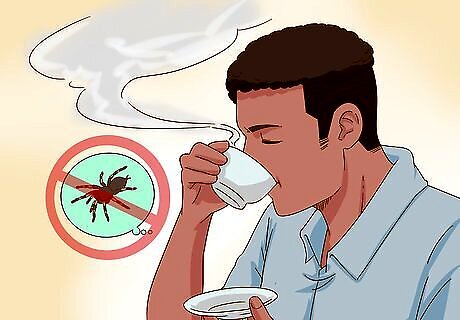
Cultivate a detached reaction to scary things. A detached reaction means that you react to the things that scare you from a place of observation rather than emotional reaction. This is something you have to practice and it helps to have mapped out your thought patterns so you understand how scary things make you react emotionally. Recognize that you're being confronted with something you find scary and that you can either have an emotional reaction (which will in turn trigger more and more fear and anxiety) or you can have a detached reaction. Monitor your physical reactions. These may include trembling, a frozen feeling, heart palpitations, nausea, stomach pain, dizziness, crying, shallow or rapid breathing, feelings of anxiety or terror, and/or disrupted sleep. Coach yourself with mantras. Pick a couple of mantras and write them down so that you have them with you at all times. Repeat them to yourself when you start having an emotional reaction, so you can short-circuit the reaction. For instance, "This isn't as bad as I am making it," or "I can't control the outcome, so I'm going to let go and trust that it will be okay." Do something physically comforting. If you can, drink a cup of tea and focus your whole being on that cup of tea--its warmth, the steam rising from the cup, the smell. Focusing on the physically comforting thing is a form of mindfulness and means that you are living in the moment, which is a place antithetical to fear.

Don't avoid the things that scare you. Avoiding the things that scare you increase the fear of the scary thing itself and also stops your body from getting accustomed to the thing that scares you, so that the fear can lessen. Start small when you're working up to dealing with the things that scare you. For instance, if you're afraid of spiders, start by dealing with small ones in your home and work your way up to bigger spiders. If you're afraid of heights, try taking walks in high places that are equipped with safety measures instead of trying right away to make yourself go parachuting. Remember: the more you avoid something, the more it will scare you and the more the fear itself will paralyze you. We can't avoid being scared, as humans it's part of our physiological make-up, but we can work on how we react to things that cared us. Nothing is as scary as what we imagine it to be.
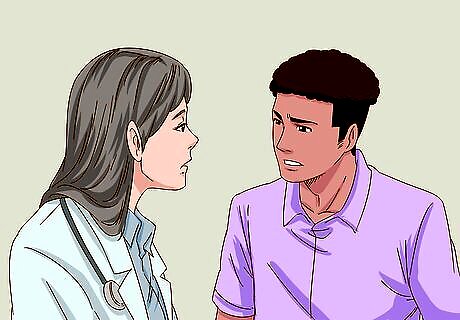
Seek professional help. Sometimes you can't stop being scared by yourself. This usually is a form of panic disorder, anxiety disorder, PTSD, OCD behaviors. Seeking professional help is a good way to work towards dealing with your anxiety and fears. Medication can also help, but make sure that you're taking medication as part of an entire program to help overcome your fears. You will need to have counseling as part of that, to retrain your brain.




















Comments
0 comment